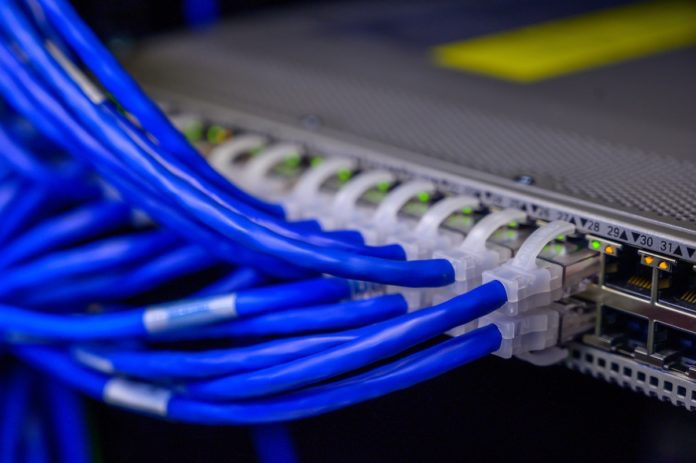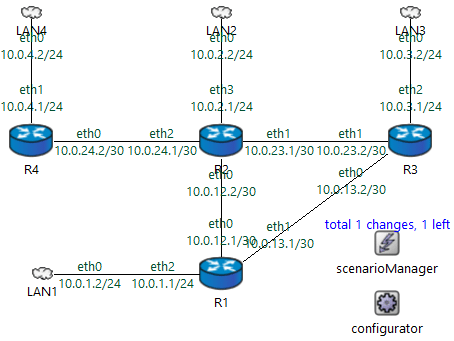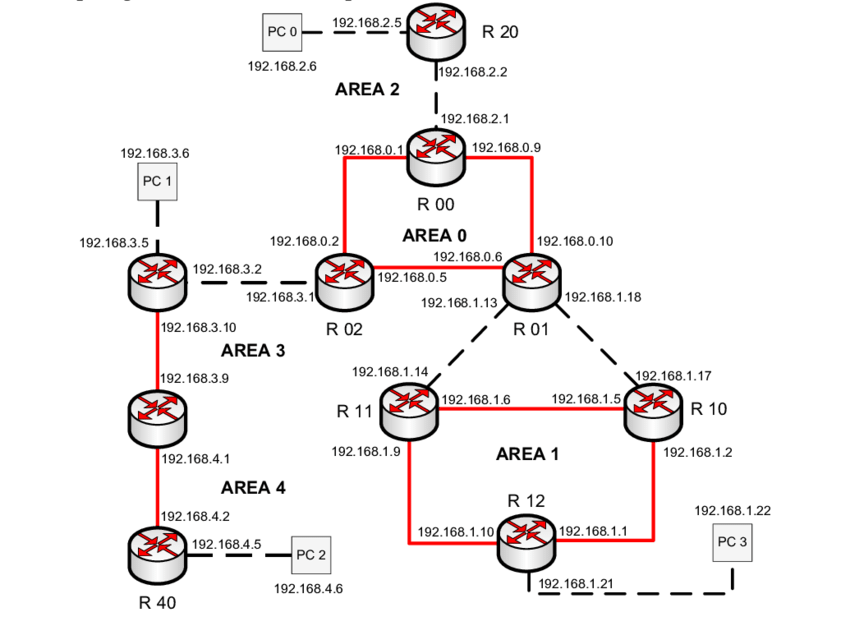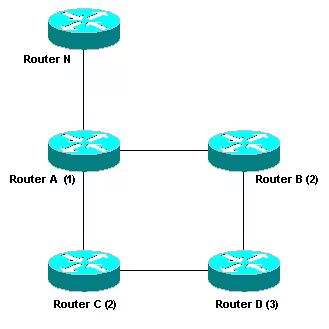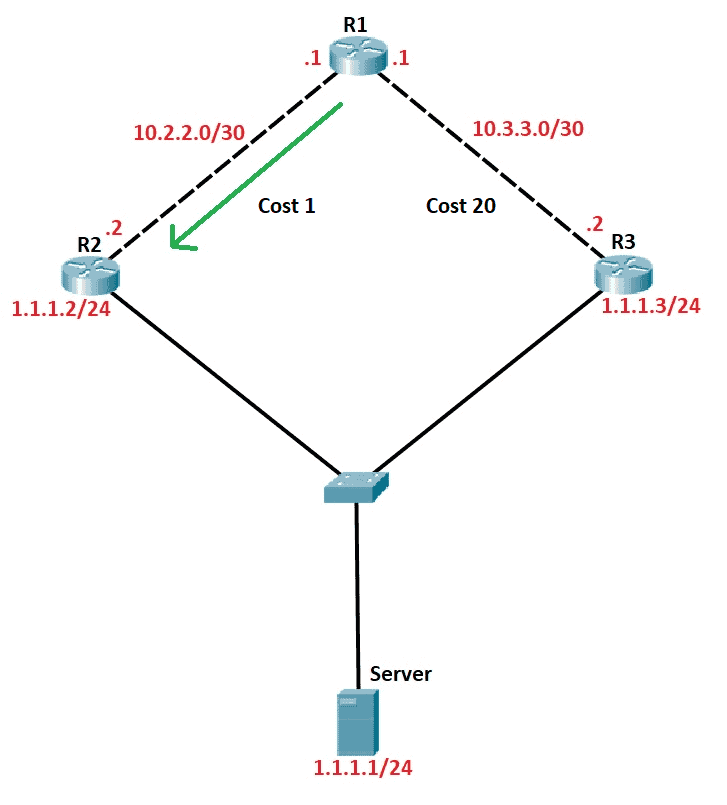Routing protocols tell your routers how to talk to one another and then govern how each of them should distribute information. In short, it helps routers plan their routes and do their jobs well.
Businesses need to choose the right routing protocols for their network. These protocols can determine whether they’re able to stream content or host a reliable teleconference. The performance and speed enable users to work fast, getting the files they need to and from different places in the network or online.
It’s also important for a business network to remain accessible because routing protocols are able to adjust to the changing conditions within the network, including the ability to detect which connections are offline and what obstructions exist.
Several routing protocols are available today, but two of the most often compared are Open Shortest Path First (OSPF) and Enhanced Interior Gateway Routing Protocol (EIGRP). Both are considered interior gateway protocols and work within a single routing domain.
Table of Contents
What is EIGRP (Enhanced Interior Gateway Routing Protocol)?
Designed by Cisco Systems, Enhanced Interior Gateway Routing Protocol is a network protocol that allows your routers to trade information more efficiently than similar protocols that came before it.
EIGRP is fully interoperable with routers using the Interior Gateway Routing Protocol, on which it was based. It’s also used for Novell NetWare and AppleTalk networks.
EIGRP routers keep a copy of the routing tables of their neighboring routers. When one router needs to find a route, it scans these tables to find a suitable one. If it fails to find a route, the neighboring router will do it for them, and so on until a route is established.
EIGRP determines the most efficient route using a diffusing update algorithm, which is hosted on a finite state machine that will ultimately decide which is the least costly or most efficient route from the origin to the destination.
What is OSPF (Open Shortest Path First)?
Open Shortest Path First, commonly used in enterprise networks, uses shortest path first (SPF) technology to find and efficiently distribute routing information between routers on a local area network (LAN).
Designed specifically for TCP/IP environments, OSPF routers are located within the same network and know about all the routers in that area. Those belonging to the same area will be able to pass along the information they’ve learned to adjacent routers, which are called neighbors.
An OSPF system can calculate the shortest path to a remote destination or router by using Dijkstra’s algorithm. This algorithm is used to find the shortest way between the source node to the destination node.
Comparing EIGRP vs. OSPF
| EIGRP | OSPF | |
|---|---|---|
| Stands for | Enhanced Interior Gateway Protocol | Open Shortest Path First |
| Standard | Cisco proprietary | IETF open standard |
| CPU resource usage | Low CPU and memory needs | CPU and memory resource intensive |
| Implementation | Easy | Complex |
| Protocol type | Hybrid | Link state |
| Network topology | Flat design | Hierarchical design |
| Administrative distance | 90 (Internal)170 (External) | 110 |
| Algorithm | DUAL (Diffusing Update Algorithm) distance vector | Dijkstra link state |
| Used by | Mid-sized to large networks | Mid-sized to large networks |
| Convergence speed | Very fast | Fast |
| Routing metrics | Combines reliability, load, bandwidth, and delay | Bandwidth/cost |
| Load balancing | Unequal route metrics | Equal metrics |
5 key differences between EIGRP and OSPF
While EIGRP and OSPF exhibit some similarities in principle, their actual execution is very different. These differences start at the level of the protocol type, and extend to their convergence time, metric, administrative distance, and load balancing.
Protocol type
EIGRP networks have routers that use both distance vector algorithm and link state. Distance vector algorithms dictate that a router should inform other routers of changes in its topology. Each router will also have a table that lists the distance between destination nodes and the router itself.
This protocol also requires the router to update itself when there are changes in the distance information of other routers or if a link to another router is gone. So with a diffusing update algorithm doing the computation to find the shortest path, EIGRP networks have both the best and alternate paths available.
Link-state routing, on the other hand, doesn’t talk to all the routers in the area like a distance vector router does. Instead, these routers exchange messages with one other router at a time to learn about the network’s topology.
OSPF networks, which are predominantly based on link-state protocol, use the Dijkstra algorithm to find the shortest path.
Convergence time
EIGRP has a faster convergence time than OSPF—meaning it can quickly recalculate routes if a link or router fails—because it uses a Diffusing Update Algorithm (DUAL) to calculate the shortest path to a destination, avoiding network loops. OSPF uses the Shortest Path First (SPF) algorithm, which takes longer to converge.
Metric
EIGRP uses a composite metric that includes bandwidth, delay, reliability, load, and maximum transmission unit (MTU). The metric is calculated by taking the minimum value for each parameter. This allows for quick route calculations and ensures the best path is always taken.
OSPF uses a single metric, cost, based on the link’s bandwidth. This metric is calculated by taking the inverse of the link’s bandwidth and is used to determine the cost of the path from one node to another. The path’s cost is then added up to determine the shortest path to a destination.
Administrative distance
Administrative distance is a measure of the reliability of a routing protocol. It’s a value that routers use to select the best path when there are multiple routes to the same destination. The lower the administrative distance value, the more reliable the protocol is considered.
In EIGRP, administrative distance is configurable, with a default value of 90 for internal routes and 170 for external routes. This means that EIGRP will prefer routes that are learned internally over those that are learned externally. If multiple routes have the same administrative distance, EIGRP will use other metrics, such as bandwidth and delay, to determine the best path.
On the other hand, in OSPF, administrative distance is fixed and cannot be changed. The administrative distance value for OSPF is 110 for all routes. This means that OSPF routes are considered less reliable than EIGRP routes by default. However, OSPF uses other metrics, such as path cost, to determine the best path if there are multiple routes with the same administrative distance.
Load balancing
The process of distributing network traffic across multiple paths to optimize resource utilization, minimize latency, and improve network performance is known as load balancing. Both EIGRP and OSPF support load balancing, but there are some differences in how they achieve it:
EIGRP
- EIGRP supports unequal-cost load balancing by default, which allows it to distribute traffic across paths with different metrics.
- EIGRP calculates the metric based on a combination of bandwidth, delay, reliability, load, and MTU of the path.
- EIGRP uses a variance command to configure the level of load balancing allowed. The variance command sets a multiplier for the minimum metric of the paths that are included in the load balancing process.
OSPF
- Supports equal-cost load balancing by default, which allows it to distribute traffic across multiple paths with the same metric.
- OSPF calculates the metric based on the bandwidth of the path.
- OSPF uses a cost command to configure the metric of the path.
Configuration differences
We analyzed EIGRP and OSPF configuration differences with sample codes. Here are the basic steps to configure each protocol.
EIGRP configuration
Follow these steps to configure EIGRP on a Cisco router:
1. Enter global configuration mode
Router> enable
Router# configure terminal2. Enable EIGRP on the router using the router EIGRP command and specify an Autonomous System (AS) number:
Router(config)# router eigrp <AS_number>3. Configure the router interfaces that will participate in EIGRP by using the network command followed by the IP address and wildcard mask of the network:
Router(config-router)# network <network_address> <wildcard_mask>OSPF configuration
Here are the basic steps to configure OSPF:
1. Enter the global configuration mode and issue the “router ospf” command followed by a process ID number. For example:
Router(config)# router ospf 1This will enable OSPF and create a new process with an ID of 1.
2. Then assign an OSPF router ID.
Each router in the OSPF network must have a unique ID to identify it. You can assign a router ID manually or have OSPF choose one automatically. To manually assign a router ID, enter the following command in global configuration mode:
Router(config-router)# router-id <router-id>Replace “router-id” with the IP address you want to use as the router ID.
3. Then define the area ID for the OSPF interface:
Router(config-router)# network <network-address> <wildcard-mask> area <area-id>When to choose EIGRP or OSPF
In most cases, OSPF is much simpler to implement because it only considers the least cost. It’s especially effective for small networks. However, it may get complicated when the network gets larger. If you have a bigger site, you’ll want to make sure that you have the IT skills to keep things in line.
It also works excellently for a variety of LAN and WAN environments, or if you’re using devices and routers from different vendors. OSPF is open sourced and it’s easier to configure a broad variety of routers using this protocol.
Cisco claims that EIGRP is also an open standard, but they do not publish a lot of the core protocols in the RFC 7868 document that they prepared. Leaving out these details makes it difficult for you to use another manufacturer’s router in an EIGRP network.
That said, EIGRP is excellent for businesses that use Cisco routers. It’s natively integrated, making it much easier to configure, and provides fast convergence.
Bottom line: EIGRP vs. OSPF
Both EIGRP and OSPF are widely used routing protocols in today’s network infrastructure. The choice between these protocols ultimately depends on the specific needs and requirements of the network in question, including factors such as network size, complexity, and hardware compatibility.
By understanding the key differences between EIGRP and OSPF, network administrators can make informed decisions when selecting the appropriate routing protocol for their network infrastructure.
You can get a good visualization of your network with a network mapping tool. And keep your network protection with these eight tips to conduct a network security audit.


